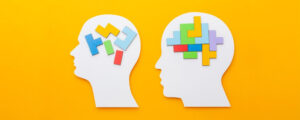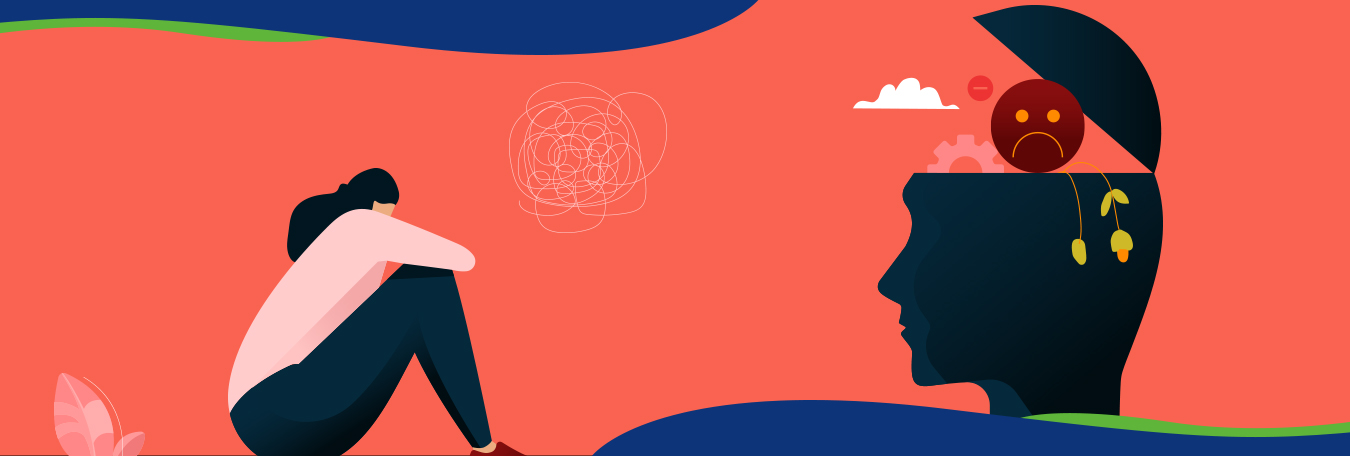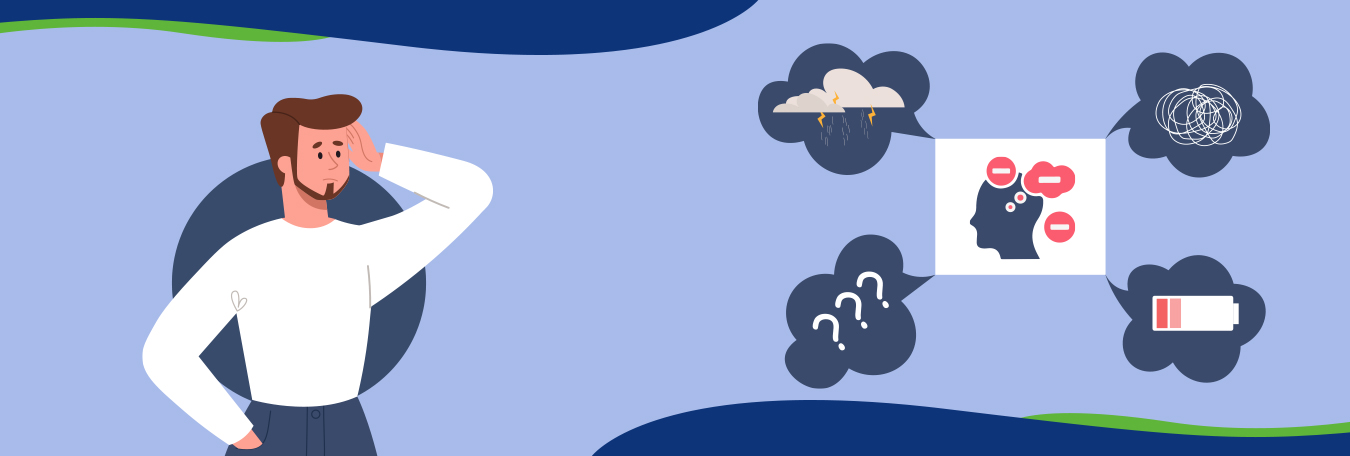We all are wired differently and people who live with certain mental conditions are even more so. It is also true for the neurodivergent condition called Attention-Deficit/Hyperactivity Disorder. The brain structures of people with ADHD and the ones of the people who do not have ADHD differ greatly. We are here to discuss everything related to the discourse of normal brain vs ADHD brain and emphasize the treatment following the discussion. Let’s begin:
What is ADHD?
ADHD is a type of medical condition that is characterized by behavior involving inactivity, lack of concentration, inattentiveness, and inability to stay on a particular task. More common in children, adults nonetheless have been diagnosed with ADHD. People with ADHD may seem restless and will have trouble with impulsivity.
The Differing Structures in Normal Brain Vs ADHD Brain.
While the differences in the structures of the normal brain and in the ADHD brain exist, for example, the ADHD brain being smaller than the normal counterparts, it does not mean something like intelligence is affected. It only means how the one who has ADHD will behave. It is more related to our executive functioning. Executive functions are things that are part of everyday life, activities like time management, planning, foresight, and organizing.
People who have ADHD tend to have a smaller prefrontal cortex, the part of the brain that is responsible for executive functioning. And, it also develops gradually during the developmental years if the affected individual has ADHD. Due to generally having a smaller brain when compared to normal counterparts, people who have ADHD also have smaller cerebellum, hippocampus, and amygdala.
A smaller cerebellum can mean inhibition of normal motor response. This is evidenced in the inability of ADHD sufferers to focus on one specific task at a particular time. Smaller amygdala and cerebellum lead to impairment in mood, memory, and overall behavior, which are common symptoms of an ADHD brain compared to a normal brain.

Differences in Neural Activity in an ADHD Brain and Normal Brain
The nervous system inside our bodies is also tasked with handling the fight-or-flight response, among other things to ensure the survival of our species. Called the autonomic nervous system, it behaves differently in an ADHD brain compared to a normal brain. Common responses that come from these mechanisms are elevated heart rate, fear, quicker breathing, and arousal.
The responses can be separated into two types: Sympathetic and parasympathetic. You can consider both of these as two points that are on the opposite side of the spectrum. When a sympathetic response is triggered that means you are aroused to a stimulus and when the parasympathetic response is turned on, it means that your brain is telling you to stop whatever you are feeling. Both responses are impaired in an ADHD mind vs the normal mind as the brain either becomes over-aroused or under-aroused due to the presence of ADHD and therefore it becomes evident via its symptoms.
Chemical Imbalance Due to ADHD
Dopamine, a chemical messenger tasked with regulating mood, memory, motor control, and also motivation among other things, tends to be low in an ADHD brain vs a normal brain. It is because when dopamine is dysregulated like it is in an ADHD brain, then the brain tends to have a difficult time sending communication signals across its different structures. It is easier for the brain to dive into confusion when the communication is not clear in its background processes. This is also one of the key reasons for differences in ADHD thoughts vs normal thoughts.
Problems With The Reticular Activating System (RAS) in People With ADHD
RAS is a cluster of neurons that regulates the wake and sleep cycle through the circadian rhythm of the body. It also plays a crucial role in managing the flight or fight response mechanism that we have discussed before while it also watches over our ability to focus. Obviously, it is also dysregulated in an ADHD brain vs a normal brain and that means you will have sleep issues. Common symptoms of ADHD become evident but this time due to insomnia or bad sleep patterns brought by ADHD: irritability, impulsivity, and difficulty focusing on a single task.
Learn More: The ultimate guide to Anxiety Symptoms in Women
Why Do These Differences Occur in an ADHD Brain vs a Normal Brain?
Although there is no single universal answer to this question there are some simple answers that might explain the differences between an ADHD brain and a normal brain.
Genetics:
The differences discussed above are present in an ADHD brain vs a normal brain due to genetics being the main culprit in 90% of the cases. The dysregulation found in the neural activity and chemical imbalance of the ADHD brain is coded by genes that cling to your family history for years and sometimes even centuries. If this is a familial mental illness, then you are probably going to get diagnosed with it if you haven’t been diagnosed with it already. Therefore, your brain was always going to be different from the “normal” one.
Environmental Factors
Environment always plays a big role in deciding if you are going to get heads in the toss for ADHD brain and Normal Brain. Exposure to risk factors like heavy metals, malnutrition, brain injuries, and premature birth can all play a role in the diagnosis of ADHD in your life.
Biological Differences in the Brain
Differences in the biology of the brain have a big say in the differences that stem from ADHD. You are going to feel these differences if you have an ADHD brain. This is because ADHD brain activity varies greatly from normal brain activity thus putting an end to the discussion of ADHD brain activity vs normal brain activity right here. This also leads to differences in the behavior of the sufferers. How your brain came to be during the developmental years while growing up can also change your brain’s hard wiring. The brain is elastic but not that elastic, especially during childhood.
The ADHD Brain Is Not Flawed
If you think about the inherent argument behind ADHD brain vs normal brain, the favorable side should always be put upfront. This is that approach: In the ADHD brain, there is no actual deficit but just differences. It does not at all mean individuals who have ADHD are flawed somehow or are not intelligent. Some of the most creative and intelligent people in the world have or had ADHD. ADHD and intelligence are not mutually exclusive as the only difference in the ADHD brain activity vs the normal brain activity is the outcome. The outcomes usually exist in the shape of certain symptoms or behaviors. In a suitable setting along with proper treatment, people with ADHD can actually thrive.
Treatment
Whether you call them differences in an ADHD brain vs a normal brain or just plain symptoms, they still need to be treated. There are a couple of ways that can be done by following certain methods of treatment diligently. Depending on the suitability of the treatment to the patient, these treatment methods can be used separately or as a combined yet singular type of treatment.
Psychotherapy that involves behavior management can help adjust people who have ADHD thoughts vs normal ones, to a normal life. This type of therapy usually uses a system of rewards to bring about the positive behavior in the affected individual.
Parental Counseling can also help as it focuses on the parents of children with ADHD learning more about the condition, so they can be better equipped to handle behavior related to an ADHD mind vs a normal mind
Medications like methylphenidate, lisdexamfetamine, or dexamfetamine can also play an important role in treating ADHD symptoms. While there is no permanent cure, they can help subside problems like impulsivity, inattentiveness, or inability to concentrate.
Last Words
Now that you know what these differences are between an ADHD brain vs a normal brain, you also know about how these differences came to be. These differences in the ADHD brain vs normal brain do not mean that people with ADHD are flawed human beings, but the things that define them apart are just unique to them and just define how they essentially behave. The behavior can be treated though, with the help of mental health experts at the Inland Empire Behavioral Group, who are more than equipped to not only handle ADHD but other mental conditions like Anxiety, OCD, and PTSD too.




